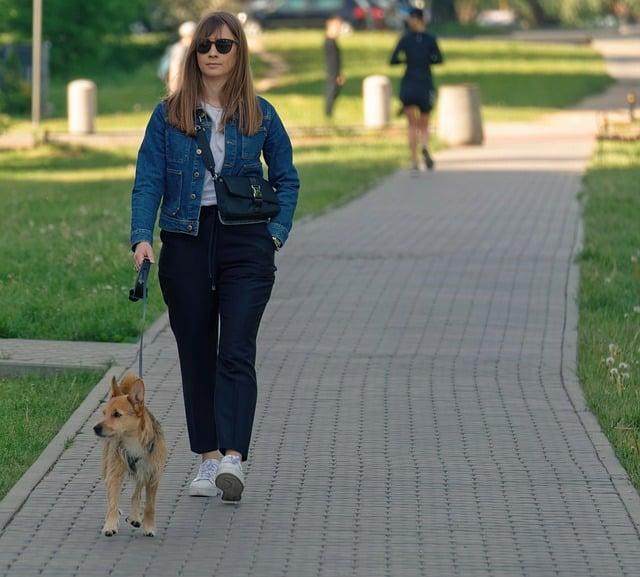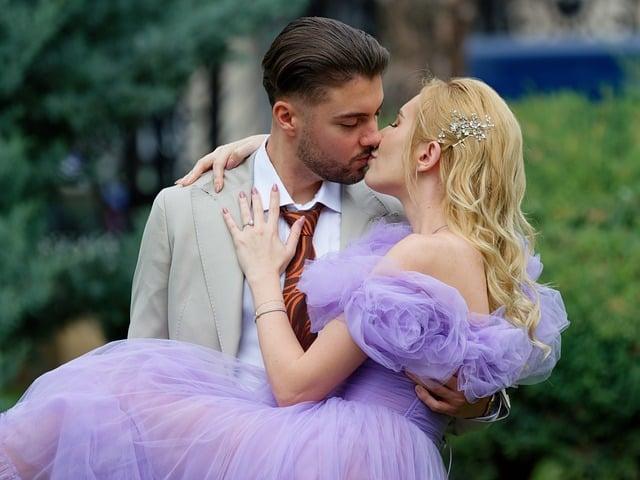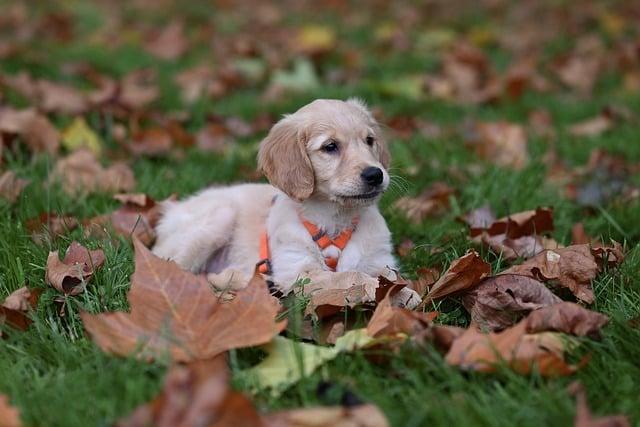Imagine a timid rescue dog named Bella, cowering in the corner of her new home. Days pass, and you patiently sit nearby, offering treats and gentle words. One morning, you notice Bella inching closer, her tail wagging ever so slightly. She leans into your hand, seeking your touch. This is trust—a bond forged through patience and love. If a dog seeks your presence, maintains eye contact, or relaxes around you, these are signs of trust. Understanding these cues not only deepens your connection but also enriches their life. Trust is a journey; let’s embark on it together.
Contents
- Understanding Canine Body Language as a Trust Indicator
- Building a Strong Bond Through Consistent Positive Reinforcement
- Recognizing Behavioral Cues That Signal Trust and Comfort
- Creating a Safe Environment to Foster Trust in Your Dog
- Q&A
Understanding Canine Body Language as a Trust Indicator
Understanding a dog’s body language is crucial in determining their level of trust towards you. Dogs communicate primarily through their physical movements and postures, and being able to interpret these signals can help you build a stronger bond with your furry friend. When a dog feels safe and secure, their body language will reflect that comfort.
Look for signs such as:
- Relaxed posture: A dog that trusts you will often have a loose, relaxed body stance. Their tail may be wagging gently, and their ears will be in a neutral position, not pinned back against their head.
- Soft eyes: When a dog looks at you with soft, relaxed eyes, it indicates they feel safe. Avoiding direct eye contact or squinting can also be a sign of trust.
- Approaching you: If a dog willingly approaches you, especially with a wagging tail, it shows they are comfortable in your presence and trust you enough to come closer.
Conversely, signs of distrust or discomfort can manifest in various ways. A dog that feels threatened may exhibit behaviors such as:
- Stiff body: A tense, rigid posture can indicate anxiety or fear. If a dog stands with their tail tucked and their body held tightly, they may not fully trust you.
- Averting gaze: If a dog consistently avoids eye contact or turns their head away, it may be a sign that they are feeling uneasy or threatened.
- Backing away: If a dog retreats or moves away from you, it’s a clear indication that they do not feel comfortable or safe in your presence.
Recognizing these subtle cues can significantly enhance your relationship with your dog. By responding appropriately to their body language, you can foster an environment of trust and security. Engaging in positive interactions, such as gentle petting or offering treats, can reinforce their comfort and encourage them to express their trust more openly. Over time, as you become attuned to their signals, you will be better equipped to nurture a deep, trusting bond with your canine companion.
Building a Strong Bond Through Consistent Positive Reinforcement
Establishing a trusting relationship with your dog is a journey that thrives on consistency and positivity. When you engage in regular positive reinforcement, you create an environment where your dog feels safe and valued. This approach not only enhances your bond but also encourages your dog to respond to you with confidence and affection. By rewarding good behavior with treats, praise, or playtime, you signal to your dog that they are doing something right, reinforcing their trust in you.
Consistency is key in this process. Dogs thrive on routine and predictability, which helps them understand what is expected of them. When you consistently reward desired behaviors, your dog learns to associate you with positive experiences. This can manifest in various ways, such as:
- Increased eye contact: Your dog will look to you for guidance, showing they trust your decisions.
- Excitement during training: A dog that eagerly participates in training sessions is one that feels secure in your presence.
- Relaxed body language: A dog that trusts you will exhibit calm and open body language, indicating they feel safe around you.
Moreover, positive reinforcement fosters a sense of partnership between you and your dog. As you celebrate their successes, no matter how small, you build a foundation of mutual respect and understanding. This collaborative spirit encourages your dog to take risks, explore new behaviors, and engage with you more fully. The more you reinforce this positive cycle, the stronger your bond will become, leading to a deeper level of trust.
remember that patience is essential. Building trust through positive reinforcement is not an overnight process; it requires time and dedication. Celebrate the small victories along the way, and remain committed to your dog’s growth. As your dog learns to trust you, you will witness the transformation in their behavior, leading to a fulfilling and loving relationship that stands the test of time.
Recognizing Behavioral Cues That Signal Trust and Comfort
Understanding a dog’s body language is essential in determining whether they feel safe and secure in your presence. When a dog trusts you, their posture will often be relaxed rather than tense. Look for signs such as a loose, wagging tail that moves freely, indicating happiness and comfort. Additionally, a dog that leans against you or seeks physical closeness is demonstrating a strong bond and a desire for connection.
Eye contact can also be a significant indicator of trust. A dog that gazes at you with soft eyes, rather than wide, fearful ones, is likely feeling at ease. **Slow blinking** is another positive sign; when a dog blinks slowly, it shows they are relaxed and comfortable in their environment. This behavior is akin to a human smile, signaling that they feel safe around you.
Vocalizations can provide insight into a dog’s emotional state as well. A dog that barks playfully or emits soft whines while wagging their tail is expressing joy and trust. In contrast, growling or barking in a tense manner may indicate fear or discomfort. Pay attention to the tone and context of their sounds to better understand their feelings towards you.
consider the dog’s willingness to engage in play or follow your lead. A dog that initiates play or eagerly participates in activities with you shows a high level of trust. **Play bows**, where a dog lowers their front legs while keeping their rear end up, are clear invitations to interact and signify comfort. When a dog feels secure, they will not hesitate to explore their surroundings with you, further reinforcing the bond of trust between you.
Creating a Safe Environment to Foster Trust in Your Dog
Establishing a secure and nurturing atmosphere is essential for building trust with your dog. Dogs are incredibly perceptive creatures, and they thrive in environments where they feel safe and understood. To create this environment, start by ensuring that your home is free from loud noises and sudden movements that could startle your pet. A calm and quiet space allows your dog to relax and feel more comfortable around you.
Another crucial aspect is consistency in your interactions. Dogs appreciate routine, and knowing what to expect from their humans can significantly enhance their sense of security. Make sure to use the same commands and cues consistently, and reward positive behavior with treats or praise. This not only reinforces good behavior but also helps your dog associate you with positive experiences, further solidifying their trust in you.
Physical space also plays a vital role in fostering trust. Create a designated area where your dog can retreat when they need some alone time. This safe haven can be a cozy bed or a crate, where they can feel secure and protected. Allowing your dog to have control over their space can help them feel more at ease and less anxious, which is essential for building a trusting relationship.
Lastly, be patient and attentive to your dog’s body language. Understanding their signals will help you respond appropriately to their needs. Look for signs of relaxation, such as a wagging tail, soft eyes, and a relaxed posture. By being attuned to your dog’s feelings and respecting their boundaries, you will create a bond based on mutual respect and trust, paving the way for a deeper connection.
Q&A
-
What are the signs that a dog trusts me?
Trusting dogs often display several key behaviors, including:
- Relaxed body language, such as a wagging tail and soft eyes.
- Seeking your attention and wanting to be close to you.
- Following you around the house or yard.
- Engaging in play and showing excitement when you arrive.
-
How can I build trust with my dog?
Building trust takes time and patience. Here are effective strategies:
- Consistently provide positive reinforcement through treats and praise.
- Establish a routine to create a sense of security.
- Respect their space and allow them to approach you on their terms.
- Engage in regular, enjoyable activities together, like walks or playtime.
-
What should I avoid to maintain my dog’s trust?
To keep your dog’s trust intact, steer clear of:
- Using harsh training methods or punishment.
- Overwhelming them with too much attention or noise.
- Ignoring their body language and signs of discomfort.
- Forcing interactions when they seem hesitant or scared.
-
How long does it take for a dog to trust me?
The timeline for building trust varies by dog, but generally:
- It can take days to weeks for a dog to start feeling comfortable.
- Rescue or previously abused dogs may take longer to trust.
- Consistency and patience are key; every positive interaction counts.
understanding your dog’s trust is essential for building a strong bond. By recognizing their body language and behaviors, you can foster a deeper connection. Invest time in nurturing this trust, and you’ll enjoy a loyal and loving companion for years to come.




